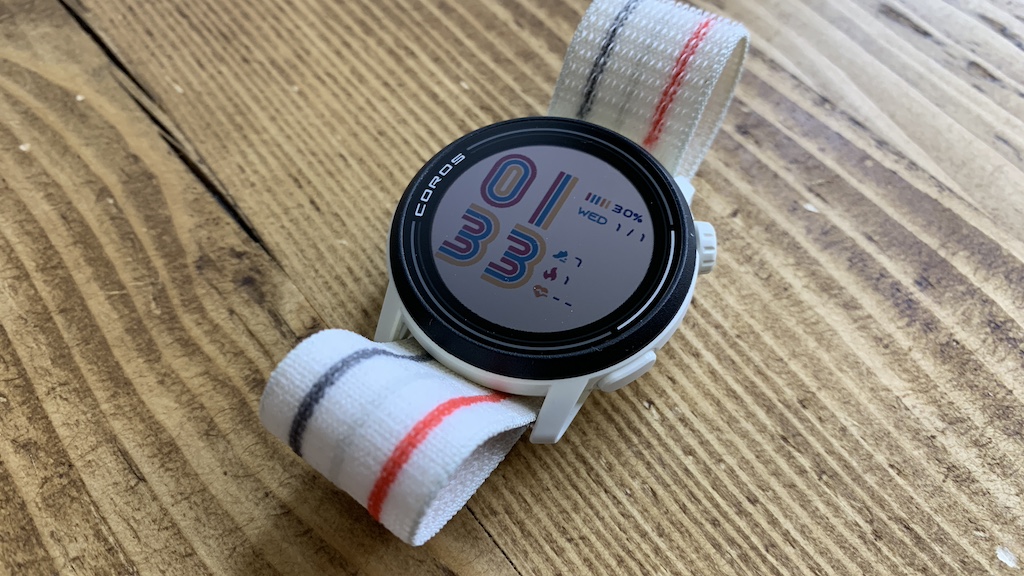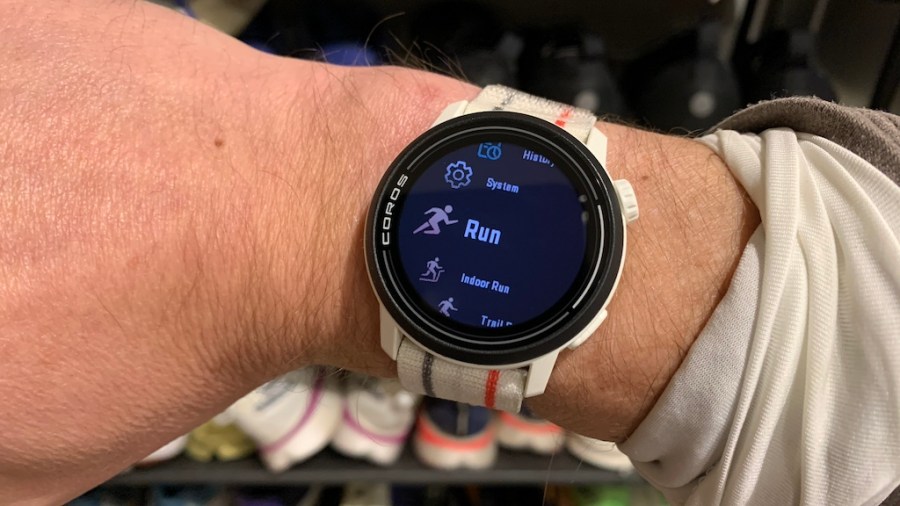After testing if for a month I’d say the COROS Pace 3 is one of the best GPS running watches for less than $300
Men’s Fitness verdict
The Pace 3 builds on the bang-for-buck strength of the Pace 2. I’d highly recommend it for new runners, those on a budget or people looking for an unfussy watch that ticks the basic boxes.- Brilliant all-round value
- Reliable multi-band GPS
- Great battery life
- Design is a bit plastic and basic
- Patchy heart rate measurements
The COROS Pace 2 was bang for buck one of the best fitness watches, so its successor has a lot to live up to. The COROS Pace 3 now packs a bigger battery life, All Systems Dual Frequency GPS and some new sports modes – including trail running. You also get an SPO2 Pulse Ox sensor for keeping tabs on your blood oxygen levels, Barometric Altimeter and improved navigation tools. Even though it’s also a little bit pricier than its predecessor, it still packs in plenty for that price tag. I was keen to see how it would perform in my tests.
Why you can trust Men’s Fitness
We spend hours testing every product or service we review, so you can be sure you’re buying the best. Our team of fitness kit reviewers includes experienced product testers and fitness writers – as well as the core MF team – who know exactly what sets the best products apart from the rest. The COROS Pace 3 was tested by experienced tech journalist and ultra-runner Kieran Alger. Find out more about how we test.

COROS Pace 3 design
When it comes to design, not much has changed. The COROS Pace 3 has a small 1.2-inch transflective, 240 x 240pixel always-on display. That’s the same size and resolution as the Pace 2, but COROS says it’s higher quality and it now packs a touchscreen. It’s no match for the brightest and sharpest displays either, but it’s perfectly legible in most light.
The scratch-resistant glass display sits in a lightweight fibre-reinforced polymer bezel and casing. It’s perhaps a bit plastic but that’s what keeps it light. And at 30g with the nylon strap, it’s impressively light. The nylon strap isn’t as soft as some, but the comfort is boosted by a smaller optical HR with less bulge for a better fit. It’s a watch you can wear happily day and night. It’s also water-resistant to 50 metres, so you can shower and swim with it on, no problem.
Overall, I’m a fan of the design. This watch is functional, not fancy. It’s unfussy, pretty subtle and effective. COROS’ trademark is long battery life. I love a watch with a good, long battery life and the COROS Pace 3 touts some impressive run time numbers that go further than the Pace 2.
COROS Pace 3 battery life
On paper, in Standard GPS mode you get 38 hours run time, with All Systems satellite on you get 25 hours, in Dual Frequency that drops to 15 hours. The daily-use battery life is 24 days. That’s four days longer than the Pace 2 and right up there with the much pricier Garmin Forerunner 965 at 23 days.
In my tests, I found it pretty much lived up to billing. The overnight burn averaged 3% and I got around nine days on a single charge, with 15.5 hours GPS training using a combination of Standard and Dual Freq GPS to track my runs. That included burning 8% from 2.5 hours in Standard GPS, oddly 7% from 4.5 hours in All Systems GPS, while one hour in Dual Frequency burned 4%.
COROS Pace 3 metrics
The GPS performance was less impressive. The addition of All Systems and Dual Frequency GPS aims to bring better accuracy to your runs and I found the Pace 3 needed it. Accuracy in Standard GPS mode was a bit hit and miss, with a tendency to read long. When you dig into the GPS tracks it has a habit of meandering slightly. It’s nothing too crazy, but the little bits add up and the Pace 3 was often quarter of a mile ahead of the other watches.
However, it was much better in Dual Frequency Mode and I found it often matched the much pricier Garmin Enduro 2 and the COROS Vertix 2 Dual Frequency. Yes, you’ll sacrifice some battery life to use the more accurate setting, but in my tests that provided noticeably better accuracy and I’d say you need it for those runs up to the marathon where the accuracy matters most.
I tested the optical heart rate against other optical sensors, a Polar Verity Sense, chest strap and COROS’ own Heart Rate Monitor. Sadly, I found the Pace 3’s optical sensor often struggled. It regularly struggled for the first ten minutes of my runs with a lot of high spikes and was prone to spiking throughout the runs as well. It also often failed to pick up drops in HR when I stopped. However, for the price you could pick up a chest strap and still have change over some of its rivals.
COROS Pace 3 verdict
The COROS Pace 3 training, performance and recovery feature set is pretty comprehensive. You get the full suite of EvoLab training, recovery and fitness insights. Plus the usual sleep and activity tracking. Navigation tools are good at the price, too. They include route planning (done in the COROS app), turn-by turn navigation and breadcrumb navigation, plus Back to Start, Elevation Profile, Distance to Destination, Checkpoint, GPS Coordinate and Storm Alerts
There’s not much here by way of smartwatch smarts. You get simple notifications, 4gb of MP4 music storage and playback (but no Spotify or Deezer support) plus some limited watch face customisation. But there’s no contactless payments.
COROS Pace 3 technical specs
| Display | Touch screen always-on memory LCD |
| Display resolution | 240 x 240 pixels |
| Display size | 1.2inches (diameter) |
| Connectivity | Bluetooth, WiFi |
| Weight | 39g with silicon band; 30g with nylon band |
How we test the best fitness watches
Kieran Alger is an ultramarathon runner and professional product tester. He trained with each of these watches for a minimum of four weeks, running across a range of distances near his base in West London as well as doing regular gym sessions.
Related content:








